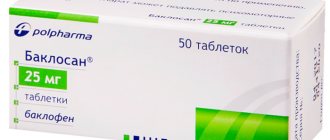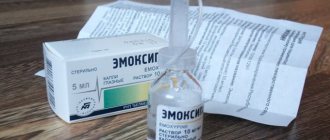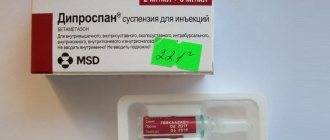The macrolide antibiotic Vilprafen has been in clinical practice since 1970. Most often it is prescribed for atypical infections of the genital organs (chlamydia) in women. This drug is included in the Russian recommendations for the treatment of this pathology in pregnant women, but there is very little information in world practice about the safety of the drug, both during pregnancy and breastfeeding. That is why taking it during pregnancy and lactation is to some extent an experiment.
Let's look at its main characteristics and evaluate the expected risk of taking it during lactation.
Drug interactions
Next, consider the possibility of combining the product with various medications:
- When combined with hormonal contraceptives, their contraceptive effect is reduced.
- The drug "Vilprafen Solutab" significantly increases the level of cyclosporine in the blood.
- When combined with other antibiotics, the bactericidal effect of both is reduced.
It should be borne in mind that taking josamycin together with various medications may change the results of treatment:
- The substance josamycin slows down the elimination of xanthines.
- When combined with ergot alkaloids, the lumen of the arteries narrows, which requires mandatory monitoring of the patient’s condition.
- Antihistamines significantly increase the risk of arrhythmias that are incompatible with life.
- In combination with Lincomycin, the effectiveness of both drugs is reduced.
- In combination with Digoxin, the concentration of the latter in the blood plasma increases.
Use for sinusitis
Vilprafen is not the drug of choice for sinusitis. It is prescribed when antibiotics from the penicillin and cephalosporin groups are ineffective or if there is an allergy to drugs from these groups.
The drug copes well with sinusitis of a bacterial nature . This is ensured by its good permeability and ability to accumulate in inflamed tissues. In this way, its maximum concentration is achieved directly in the maxillary sinuses, where the bulk of pathogenic microbes are concentrated.
During pregnancy
There is information that when using this antibiotic, there is a possibility of its penetration through the placenta, and the active component of this drug can also pass into mother's milk. But, despite this, treatment of chlamydial infections in lactating and pregnant women with this bactericidal drug is allowed. But such a decision is made by the doctor, taking into account all contraindications for each specific patient. It is also necessary to evaluate what will cause more harm - the use of the drug or the further development of the infection. But during lactation, while being treated with this antibiotic, you need to stop feeding and switch the baby to formula.
Indications for cystitis
The drug is prescribed for any cystitis of infectious origin in men and women. It is also advisable if the bladder disease is caused by chlamydia, mycoplasma and ureaplasma. Such microorganisms are most often found in the body of women suffering from cystitis.
Vilprafen is also recommended for the treatment of inflammation of the bladder caused by sexually transmitted infections. In some cases, combination therapy for such cystitis is indicated.
Children, pregnancy and breastfeeding
The drug is not prescribed to pregnant women if there are severe disorders in the liver or sensitivity to the constituent components.
In childhood
The drug is not prescribed to premature babies. In newborn patients with impaired liver function, treatment is carried out under strict supervision.
Vilprafen is used in the form of a suspension for children under 14 years of age.
Vilprafen 1000 mg Solutab can be dissolved in water to prepare a suspension. If treatment with the drug is prescribed to children, the dosage is as follows: 30-50 mg per 1 kg of body weight, divided into three doses.
The suspension for children up to three months of age is dosed according to the exact weight of the child. Why tablets are used and whether they are worth using for treatment should be found out from your doctor.
Features of the antibiotic Vilpaferon with alcohol
When alcohol interacts with a drug, adverse symptoms appear in practice
One of the most important medical means in the fight against diseases is antibiotics. It is very difficult to imagine therapy for infectious diseases without these drugs. Vilprafen belongs to this class of drugs. Reviews from patients confirm the positivity of treatment with its help. The most important active ingredient is josamycin. Manufacturers of the drug produce it in tablet form, so therapy is oral in nature.
Important! Positive reviews are not enough for safe use. It is very important to know the compatibility of Vilprafen with alcohol, as unpleasant consequences may occur.
When alcohol interacts with the drug, the following side symptoms appear in practice:
- A person may experience nausea or vomiting;
- In some situations, stomach upset occurs;
- Much less often the patient suffers from constipation;
- Most people lose their appetite or develop colitis;
- The interaction of ethanol with an antibiotic negatively affects the functioning of the liver. Moreover, jaundice or organ failure may form;
- Some citizens experience an allergic reaction or disruption of the auditory organs.
Drug interactions
If Vilprafen is prescribed simultaneously with antihistamines that contain terfenadine or astemizole, the elimination of these substances is sometimes slowed down, which ultimately leads to life-threatening cardiac arrhythmias.
If Vilprafen and Digoxin are taken simultaneously, the level of digoxin in the blood plasma may increase.
Speaking about interactions with other drugs, it should be borne in mind that Vilprafen is an antibiotic. Before using any medicine, it is imperative to determine whether it is an antibiotic or not.
When taken with hormonal contraceptives, the effect of the latter may be reduced. In such a situation, the use of additional non-hormonal contraceptives is recommended.
If pseudomembranous colitis develops, Vilprafen should be discontinued and appropriate treatment prescribed. Taking drugs that reduce intestinal motility is contraindicated. Patients with renal failure need to adjust the dosage regimen in accordance with the values of creatinine clearance (CC).
According to the instructions, Vilprafen is not prescribed to premature babies. When used in newborns, liver function should be monitored. It is necessary to take into account the possibility of cross-resistance to various macrolide antibiotics.
Vilprafen for hepatitis B
The drug is not prohibited during breastfeeding, but the doctor must monitor the condition of the mother and child. This is because the antibiotic has not been tested in this group of patients and therefore its effect is unknown.
An important point when choosing a drug for a lactating woman is the half-life; for Vilprafen it is 12 hours. This means that the antibiotic accumulates in the baby’s body tissues and has a toxic effect. Approximately 15% of josamycin is bound to plasma proteins.
This means that the concentration of the active substance in the drug is quite high, and a large portion of the antibiotic will enter the newborn’s body. This is especially dangerous in the first months of feeding, since there is no antitoxic function of the liver. In addition, the drug is contraindicated in nursing mothers with premature babies.
Thus, Vilprafen is not recommended for use while breastfeeding. This is due to the fact that a large amount of josamycin enters the child’s body with milk. The drug may have a toxic effect on the immature body of an infant. In addition, the effect of the drug has not been sufficiently studied.
data-matched-content-rows-num=”9, 3″ data-matched-content-columns-num=”1, 2″ data-matched-content-ui-type=”image_stacked”
Instructions for use
Vilprafen is taken in the recommended daily dose for adults and adolescents over 14 years of age, which is 1-2 g, in 2-3 doses. If necessary, the dose can be increased to 3 g per day. Children aged 1 year have an average body weight of 10 kg.
The daily dose for children weighing at least 10 kg is prescribed based on the calculation of 40-50 mg/kg body weight daily, divided into 2-3 doses:
- children weighing 10-20 kg are prescribed 250-500 mg (1/4-1/2 tablet dissolved in water) 2 times a day;
- children weighing 20-40 kg are prescribed 500-1000 mg (1/2-1 tablet dissolved in water) 2 times a day;
- children weighing more than 40 kg - 1000 mg (1 tablet) 2 times a day.
Typically, the duration of treatment is determined by the doctor and ranges from 5 to 21 days, depending on the nature and severity of the infection. In accordance with WHO recommendations, the duration of treatment for streptococcal tonsillitis should be at least 10 days.
In anti-Helicobacter therapy regimens, Vilprafen is prescribed in a dose of 1 g 2 times a day for 7-14 days in combination with other drugs in their standard doses:
- famotidine 40 mg per day or ranitidine 150 mg 2 times a day + josamycin 1 g 2 times a day + metronidazole 500 mg 2 times a day;
- omeprazole 20 mg (or lansoprazole 30 mg, or pantoprazole 40 mg, or esomeprazole 20 mg, or rabeprazole 20 mg) 2 times a day + amoxicillin 1 g 2 times a day + josamycin 1 g 2 times a day;
- omeprazole 20 mg (or lansoprazole 30 mg, or pantoprazole 40 mg, or esomeprazole 20 mg, or rabeprazole 20 mg) 2 times a day + amoxicillin 1 g 2 times a day + josamycin 1 g 2 times a day + tripotassium bismuth dicitrate 240 mg 2 times a day;
- famotidine 40 mg per day + furazolidone 100 mg 2 times a day + josamycin 1 g 2 times a day + tripotassium bismuth dicitrate 240 mg 2 times a day).
In the presence of atrophy of the gastric mucosa with achlorhydria, confirmed by pH-metry: amoxicillin 1 g 2 times a day + josamycin 1 g 2 times a day + tripotassium bismuth dicitrate 240 mg 2 times a day.
For common and globular acne, it is recommended to prescribe Vilprafen at a dose of 500 mg 2 times a day for the first 2-4 weeks, then 500 mg of josamycin 1 time a day as maintenance treatment for 8 weeks.
The instructions for Vilprafen Solutab stipulate that the drug can be taken in different ways: you can take the tablet with water, or before dissolving it in 20 ml of water. The suspension that forms after dissolving the tablet must be mixed very thoroughly.
Vilprafen tablets must be swallowed whole. Often patients are interested in how to take it, before or after meals. The instructions indicate that the tablets must be swallowed between main meals.
When treating, it should be taken into account that if one dose is missed, you must immediately take a dose of the drug. However, if it is time for your next dose, do not take the missed dose and return to your normal treatment regimen. Do not take double dose. A break in treatment or premature discontinuation of the drug reduces the likelihood of success of therapy.
Contraindications
It is strongly recommended that those who have disorders and other dysfunctions of the liver and kidneys refrain from taking it, regardless of the form of release. Since it is an antibiotic, its effect is quite strong. It will take time to restore the filtering organs. That is why Vilprafen should not be used systematically.
Moreover, contraindications also apply to:
- Individual intolerance to any of the components of the drug.
- Premature babies with an inflamed bladder.
Drug analogues
Not every patient may be suitable for therapy with this drug, since it has contraindications, and in addition, side effects are possible
A replacement can be selected for this drug, but this issue should be dealt with exclusively by a doctor, since it is very important to take into account the patient’s condition and correctly assess the course of the disease. Analogues of this medicine are included in the group of macrolides
So, if it is necessary to replace “Vilprafen Solutab”, drugs in the form of “Midecamycin”, “Roxithromycin”, “Clarithromycin”, “Azithromycin”, “Fromilidine”, “Hemomycin”, “Sumazid”, “Binoclair”, “Claricin”, “ Clarbact", "Erythromycin", "Azitrala", "Rovamycin" and others:
- "Tsifran" - indications for use will be: otitis media, sinusitis, inflammation of the abdominal organs, bacterial infections of the gastrointestinal tract, pelvic organs, gall bladder, kidneys, bones and joints, skin. Contraindicated in case of sensitivity to the drug, age group under 18 years, as well as during pregnancy and breastfeeding.
- "Roxibel" - used for infections of the upper and lower respiratory tract, dermal suppurations, non-gonococcal urethritis. Prohibited for people with liver cirrhosis, hepatitis C, allergies, pregnant and lactating women, children under 12 years of age.
Parasite drug Metronidazole - how long does it take to be removed from the body?
Have you been trying to get rid of PARASITES for many years?
Head of the Institute: “You will be amazed at how easy it is to get rid of parasites by taking every day...
Read more "
Parasites are a kind of “plague” of the 21st century, since throughout the world every third person is a carrier of helminths. In medicine, it is customary to distinguish three types of worms - round, flat and tape. About 80% of cases of parasitic diseases are associated with round helminths; unfortunately, they are most often diagnosed in children. And if earlier it was customary to expel worms using folk remedies, today a medicine is provided for each type of microorganism.
Anthelmintics are medications, the components of which inside the body lead to the death of parasites, the time of elimination of which is different for each person. Some tablets act instantly, but involve high toxicity. Others are gentle and safe, but require longer use. Metronidazole is the most popular anthelmintic due to its high bioavailability.
Where does Metronidazole accumulate?
The question of how to remove the simplest microorganisms of a pathogenic nature can be answered by the drug Metronidazole. The great demand for such a medicine is due to the fact that its synthetic composition quickly destroys any type of parasites, but with such a high efficiency rate it does not pose a threat to the human body. When using the drug orally, 80% of the composition is absorbed within 1 hour.
The main advantage of Metronidazole is that when tablets are taken orally, their bioavailability is 100%. The drug can be taken regardless of meals, this will not affect the performance in any way. The composition of the tablets quickly penetrates into the liver, skin, kidneys and lungs, sperm, cerebrospinal fluid and bile, and vaginal secretions. The drug is metabolized in the liver and bile, while its concentration in the intestine is minimal.
Those who are prohibited from drugs that burden the liver are advised to familiarize themselves with alternative drugs for parasites:
- Bee moth;
- Troychatka Evalar;
- Detox.
Period of elimination from the body
Metronidazole is one of the most powerful anthelmintics, belonging to the group of 5-nitroimidazole derivatives. In addition to the absorption time and bioavailability of this medication, its elimination time is considered an advantage. As mentioned earlier, the composition of the tablets quickly penetrates into many human systems and organs, after which it negatively affects the DNA of parasites.
Separately, pharmacists focus on how long it takes for the components of the drug to be eliminated. Half-life of the anthelmintic occurs 6-10 hours after oral administration of the tablets. For newborns, the duration of excretion is much longer - about 24 hours. Almost all inactive metabolites of Metronidazole are excreted from the body in the urine, which is why it turns brownish-red. The intestines excrete only 20% of the tablets in parallel with the dead individuals.
How to speed up the elimination process?
To assess the feasibility of using Metronidazole, you need to know the indications for its use. Giardia, amoeba, clostridia, prevotella, bacteroides, veillonella and peptococci, trichomonas, balantida and leishmania are sensitive to the components of such an antibiotic. To achieve the maximum therapeutic effect, you need to take the tablets strictly according to the instructions from your doctor.
On average, Metronidazole leaves the patient’s body within 12 hours, it all depends on the individual characteristics of the body. Doctors note that the drug leaves traces in the body for several more days. If the drug was taken irrationally and thereby caused side effects, its accelerated elimination may be necessary.
Instructions for Metronidazole
In addition to the indicators of how long it takes for Metronidazole to be eliminated from the body, another advantage of the drug is its ease of use. Typically, the treatment regimen and required dosages are established by the attending physician based on diagnostic data and the individual characteristics of the patient’s body. Before you start taking the pills, be sure to familiarize yourself with the contraindications and side effects.
For children, it is appropriate to take from 250 to 500 mg of the drug, for adults - from 500 to 2000 mg, it all depends on the diagnosis and weight category of the patient. The duration of therapy is on average 5-8 days, after which it is necessary to conduct a comprehensive diagnosis to establish the effectiveness of treatment. If necessary, Metronidazole can be repeated after 3-5 weeks.
pharmachologic effect
The drug is an antibiotic that belongs to the group of macrolites. The bacteriostatic effect of the drug is due to the inhibition of protein synthesis by bacteria. If there are foci of inflammation, the drug has a bactericidal effect.
Vilprafen is a highly effective agent against such intracellular microorganisms as Mycoplasma pneumoniae, Ureaplasma urealyticum, Chlamydia trachomatis, Legionella pneumophila, Chlamydia pneumonuae, Mycoplasma hominis.
High activity is also observed against gram-negative aerobic bacteria:
- Haemophilus influenzae, Neisseria meningitidis, Neisseria gonorrhoeae, Bordetella pertussis;
- gram-positive aerobic bacteria: Streptococcus pyogenes, Staphylococcus aureus, Corynebacterium diphtheriae, Streptococcus pneumoniae;
- anaerobic bacteria: Peptostreptococcus, Peptococcus, Clostridium perfringens.
The drug is effective against Treponema pallidum. The active ingredient of the drug is josamycin, which is completely and rapidly absorbed from the gastrointestinal tract.
What can replace the product?
If for financial or any other reasons it is impossible to carry out treatment with Vilprofen, then the doctor is looking for an alternative. Drugs that have a similar effect are considered:
- "Azithromycin";
- "Clarithromycin";
- "Erythromycin";
- "Roxithromycin";
- "Midecamycin."
Medicines belong to the group of macrolides, but are cheaper than Vilprofen. When choosing an analogue, the doctor pays attention to which pathogen needs to be affected. The prescribed substitute depends on this.
- Drugs from the macrolide group, without exception, inhibit the vital activity of pneumococci.
- If the pathology is caused by Staphylococcus aureus, then Clarithromycin or Erythromycin is prescribed (it is less effective).
- Azithromycin is used to destroy Haemophilus influenzae. Among all macrolides, it has the most pronounced effect on this pathogenic microorganism.
- "Josamycin" exhibits high activity against intracellular microbes, but has little effect on mycoplasmas. Medikamycin is more aggressive towards them.
- To inhibit the vital activity of Helicobacter pylori or Legionella, Clarithromycin is used as the most effective antibiotic.
Taking into account the higher therapeutic effect of the medicine on different groups of pathogenic microorganisms, the doctor selects the necessary substitute. Without knowing the specific effects of antibiotics, you cannot choose an analogue on your own; for this you need to consult a doctor.
Indications for use
The drug "Vilprafen Solutab" is recommended for use when there is hypersensitivity to penicillin. Effectiveness is observed in the treatment of streptococcal infections, and in addition, in the treatment of mycoplasmosis. Indications for use are diseases of the ENT organs and the respiratory system as a whole.
Thus, Vilprafen Solutab 1000 mg is very effective for scarlet fever, diphtheria, sinusitis, laryngitis and tonsillitis.
In addition, this drug has proven its effectiveness against pharyngitis, otitis media, acute bronchitis, pneumonia, whooping cough and sore throat.
Doctors often prescribe this drug in the following cases:
For oral infections, for example, alveolitis, periodontitis, pericoronitis, gingivitis and the like.
- Against the background of tissue and skin diseases. For example, with felon, cellulitis, globular acne, anthrax and furunculosis.
- Burn and postoperative infections.
- Against the background of pathologies of the digestive system, which are provoked by the Helicobacter bacterium. For example, this drug is often prescribed for intestinal or stomach ulcers, and also for chronic gastritis.
- Against the background of genitourinary infections, for example, with chlamydial or mycoplasma lesions, with syphilis, gonorrhea, urethritis, prostatitis, as well as for the treatment of lymphogranuloma venereum.
What is "Vilprafen": general information
The drug belongs to the antimicrobial drugs of the macrolide group with the active substance josamycin. One tablet contains 500 mg. "Vilprafen" inhibits the vital activity of many virulent microorganisms:
- streptococci;
- staphylococci;
- meningococci;
- diphtheria bacillus;
- chlamydia;
- legionella;
- ureaplasma
The medicine is available in solid form or as a suspension. The tablets are coated with a protective soluble coating, packaged in 10 pieces per blister. The solution is packaged in 100 ml bottles and contains 300 mg of active substance. They most often treat pathologies of the urinary system in children.
In the pharmacy you can find another dosage form - soluble tablets called “Vilprafen Solutab”. They are oblong, white, notched, and contain fruit flavoring. Due to its ability to dissolve, josamycin quickly enters the body and begins to act, so they are prescribed for severe cases of the disease, as well as for recurrent chronic forms. Instructions for use indicate the conditions under which Vilprafen can help:
- pathologies of the upper and lower respiratory tract;
- ENT diseases;
- diseases of the genitourinary system;
- oral infections;
- skin lesions of bacterial origin.
The pharmacodynamics of "Vilprafen" is to suppress the process of protein formation in pathogenic microorganisms, which leads to the cessation of their reproduction and then to death. Depending on the dose, the drug has a dual effect. If the dosage is standard, then the medicine inhibits the vital activity of microbes. When a patient is prescribed an increased dose, a bactericidal result is obtained: microorganisms die.
"Vilprafen" is quickly absorbed by the gastrointestinal tract, enters the blood and reaches its maximum concentration within 2 hours after use. The drug is neutralized by the liver and excreted in the bile; less than 20% of the active substance is excreted in the urine. Taking Vilprofen at intervals of 12 hours allows you to maintain the concentration of josamycin in the body, which can help cope with the inflammatory process.
Directions for use and dosage
In order to use the medicine correctly, you should first read its instructions, which stipulate the dosage and duration of treatment for various diseases. The prescription in each specific situation is made by the doctor, taking into account the diagnosis and general condition of the patient. The duration of the treatment course is usually from 5 to 25 days. This antibiotic is taken according to the following rules:
- The daily dose is up to 2 milligrams, and in the presence of severe disease it increases to 3 milligrams.
- The entire amount of the drug is taken in two or three doses.
- In order to achieve the required concentration, it is advisable to use the medicine between meals.
- The tablet can be swallowed, followed by some liquid.
- As part of the preparation of the liquid composition, the tablet is dissolved in a spoonful of water, after which the medicine is thoroughly mixed.
- In order to achieve a complete recovery, you should not take breaks in treatment.
Reviews
- I have already taken Vilprafen several times, with a break of several years. For the first time, cystitis was diagnosed and the doctor prescribed this particular drug. It all went away in two weeks. Then, a year or two later, the problem repeated itself. The symptoms are similar, so I decided to buy Vilprafen again without a specialist’s recommendation. Everything went away, my health improved.
- A 12-year-old child was diagnosed with inflammation of the bladder. The attending physician prescribed Vilprafen drops. We took them for 10 days according to the dosage on the insert. After completing the course, the problem was still observed, but less pronounced. After some time everything passed.
- Got sick with cystitis. Honestly, the discomfort was so terrible that I didn’t know what or how to save myself. A friend told me to buy Vilprafen and drink it for about twenty days. I went, bought it, read the instructions - the maximum course is 14 days. I didn’t take any risks - I chose the manufacturer’s recommendations. After the 8th day, the discomfort disappeared, but I decided to finish the course. I recommend!
Vilprafen solutab for children
It is especially important to observe the correct dosage when treating a child. This drug can be prescribed by a doctor only taking into account the weight of children
When treating children, the medicine is dissolved with water to form a suspension, which is very convenient during use, especially considering that this medicine has a pleasant smell and taste for the baby. The dosage is set in milligrams per kilogram of body weight. The scheme for using this antibacterial drug is as follows:
- For a weight of up to ten kilograms, the dose should be 40 milligrams three times a day.
- If you weigh up to twenty kilograms, use 250 milligrams twice.
- If you weigh up to forty kilograms, use 500 milligrams twice a day.
- If you weigh more than forty kilograms, use 1000 milligrams twice a day.
What kind of drug is this
Vilprafen is an antibacterial drug from the macrolide group. Its active ingredient is josamycin.
The drug is available in several dosage forms:
- film-coated tablets containing 500 mg of antibacterial substance,
- dispersible tablets with strawberry flavor containing 1000 mg of active ingredient,
- suspension containing 150 mg of josamycin in every 5 ml.
In addition to the antibacterial substance, each drug contains the necessary excipients.
Dosage and duration of use
On average, the course of medication lasts 10–14 days. If the expectant mother suffers from any one type of infection while pregnant, then the dose will be 500 mg 3 times a day in any form. The drug is taken between meals without chewing, or if it is a dispersion, it must be shaken. Also, to support vitality, women are prescribed a vitamin complex in parallel.
First trimester
The main and most important organs are formed in the first 6–8 weeks of gestation, and right now it is necessary to refrain from using chemical compounds. So if there is a need to take Vilprafen in the early stages of pregnancy, the doctor will suggest you take it after the 10th week.
Second and third trimesters
The most acceptable period of gestation would be 20–22 weeks for the use of antibiotics; the baby will still continue to develop, but in minor parameters and the treatment will not cause any particular harm.
Description, characteristics
The antibacterial drug is available in the form of tablets, where the main active ingredient is josamycin. 1 tablet contains 1000 mg of the main substance, which has a bacteriostatic effect.
Vilprafen can be found in pharmacies and in the form of a suspension, where for every 5 ml there is 150 mg of the main active substance. The choice of dosage form depends not only on the patient’s preferences, but also on the prescription of the specialist who prescribes the drug for the treatment of sinusitis.
For inflammation of the maxillary sinuses, Vilprafen has been used for a long time. As a rule, it is prescribed after antibiotics from other groups have not shown effectiveness in treating the disease or have caused an allergic reaction in the patient. The medicine copes especially quickly with sinusitis of a bacterial nature, since josamycin is responsible for the effective fight against pathogenic bacteria and microbes.
However, you should not buy the drug yourself, because it is an antibiotic that can harm human health. Before taking the drug, you should visit an otolaryngologist and undergo a full examination. The fact is that taking Vilprafen in some cases is impossible due to existing contraindications, and can cause side effects in case of individual intolerance to the components of the drug.
Before starting treatment for sinusitis, it is important to visit an experienced ENT doctor
Indications
Vilprafen is prescribed by doctors for the treatment of infectious diseases that are accompanied by an inflammatory process. These include:
- Diseases of the ENT organs.
- Skin infections.
- Stomatitis, whooping cough, bronchitis.
- Cystitis and other urinary tract infections.
- Diphtheria.
Again, the medicine cannot be prescribed independently, since it can also have a negative effect on the human body in case of unjustified use or overdose. A medical specialist knows all the indications when the use of Vilprafen will be a necessary condition for the treatment of a particular disease.
Vilprafen is actively used not only for the treatment of sinusitis, but also for the treatment of whooping cough, as well as many other diseases
Consequences of taking
An excellent situation is when all tests have been completed before such a significant event, and if necessary, if an infection is detected, all treatment measures have been completed before conception. However, there are special cases when everything happened spontaneously, was not planned, or when the infection occurred already during the gestation process. Then you should be treated, despite the reviews of those who took Vilprafen during pregnancy, because the effect of infection on the fetus and baby in the future is much more serious and severe than the effect of the drug. Your body may experience different reactions - a rash on the neck and face, and nausea with diarrhea, but is all this comparable to health problems in the baby, which can cause such dangerous infectious outbreaks or even a complete interruption of such a long-awaited and desired conception? .
How does Vilprafen Solutab work and does it help with sinusitis?
Vilprafen is a modern macrolide antibiotic based on josamycin. It is active against gram-positive and gram-negative pathogenic bacteria and intracellular microorganisms. Inhibits DNA protein synthesis of pathogens, which leads to a decrease in their ability to reproduce and divide cells. It is recommended for the treatment of sinusitis of any severity; the active substance of the composition has virtually no effect on the gastrointestinal tract, unlike other antibacterial drugs.
The advantage of josamycin is its ability to affect pathogens resistant to the antibiotic erythromycin.
You can find out about the use of Oxolinic ointment for a runny nose here.
Composition and active substance
Wab is produced by a Dutch company in the form of tablets with a dosage of 500 mg and 1 g. The main substance is josamycin. It has a wide spectrum of action and is included in the WHO list of essential medicines.
Additional components:
- cellulose;
- silica;
- polysorbate 80;
- talc;
- magnesium stearate;
- aluminum hydroxide.
It is well absorbed by the body and does not accumulate in the kidneys and liver. It has low toxicity, making it suitable for the treatment of sinusitis in children.
For what forms of disease is it used?
Does the drug help? Prescribed for the treatment of acute, chronic sinusitis of a bacterial nature. The product is effective against other pathogens, for example, chlamydia, mycoplasma. Recommended during the recovery period after surgery to prevent complications. It is combined with other drugs, which is useful for unspecified etiology of sinusitis of any severity.
Josamycin has virtually no effect on enterobacteria, so even with prolonged therapy it does not inhibit the functioning of the gastrointestinal tract.
The instructions for using Nazoferon can be found by clicking on the link.
Features of treatment with Vilprafen
- Vilprafen should not be used in parallel with antihistamines and bactericidal medications. This “neighborhood” significantly reduces the effectiveness of treatment.
- Josamycin slows down the production of vitamin K by intestinal bacteria, so treatment with this antibiotic in women with a predisposition to bleeding should be treated more carefully.
- It is preferable to prescribe Vilprofen after the 16th week of gestation, when the fetus is fully formed. But in case of a real threat of miscarriage, treatment can be carried out from the 10th week of pregnancy.
- Scrupulously adhering to the dosage and schedule of taking the pills guarantees the maximum effect of treatment and the absence of negative consequences for the child.
The opinions of obstetricians and gynecologists on the prescription of drugs, including antibiotics during pregnancy, differ significantly from each other. Some prescribe pills even for the slightest runny nose, while others try to postpone treatment until a later date. Therefore, in order not to get confused, women should seek help only from competent doctors who are able to assess the need for treatment and select it correctly. But even if you were prescribed Vilprafen during pregnancy, reviews of women who have been treated with this drug will easily reassure you, since it has proven itself to be the safest and most effective remedy.
Use during pregnancy
The use of Vilprafen during pregnancy is approved by WHO in order to get rid of infectious diseases. The European branch of WHO also recommends using the drug to get rid of chlamydia, which includes:
- Trachoma;
- Lymphogranuloma;
- Urogenital infection;
- Ureaplasma.
The most dangerous is a urogenital infection, the infection of which occurs during sexual intercourse and in 70% does not make itself felt, developing in the body over a long period. Its weak echoes include: a burning sensation when urinating, heaviness in the lower abdomen and lower back, an unpleasant odor from discharge from the genitals. But for pregnant women this is a big risk, since the action of bacteria can provoke the death of a fetus or newborn baby, high water levels, gestosis, and irreparable damage to the baby’s organs. Ureaplasma is less dangerous, and its negative effects have not been proven, but experts believe that Vilprafen is necessary for ureaplasma during pregnancy, because it can also have negative consequences for the positive resolution of an interesting situation and the full health of the fetus.
Side effects
There are no experiments that confirm the harmful consequences for the unborn child after taking Vilprafen during pregnancy, since there are no such incidents. As a result, its use is available only in the absence of safe analogues. Adverse reactions may include:
- Disorders of the gastrointestinal tract, such as diarrhea, nausea, loss of appetite, constipation, colitis, heartburn;
- The drug may also have a negative effect on the hearing aid;
- Occasionally – purpura;
- An allergic reaction may also manifest itself as urticaria, Quincke's edema and anaphylactoid reaction;
- In very rare cases, Vilprafen during pregnancy causes vaginal dysbiosis and leads to the manifestation of candidiasis;
- Jaundice and liver dysfunction occur in the liver and gallbladder.
How to take for pregnant women
In the first 10-12 weeks of gestation, the pregnant body reacts extremely negatively to taking any medications. If you start treatment with an antibiotic without permission, without a doctor’s recommendation, then the mother risks facing unpleasant consequences for the baby, such as developmental disorders, because there will be drug intervention in the embryonic development of the baby. But already from the 10th week of gestation, the use of Vilprafen becomes safe for the fetus and mother, since all vital systems are established and partially formed. The main thing is to strictly follow the dosage regimen and recommended dosages.
For each pregnant woman, her own antibiotic therapy regimen is selected, which is drawn up by an obstetrician-gynecologist who monitors the course of pregnancy. The general instructions for use recommend that pregnant women take Vilprafen twice or three times a day, 500 mg tablet on an empty stomach. The pill should be swallowed completely without breaking its integrity and washed down with plenty of plain water.
The tablets should be taken strictly at regular intervals, usually once every 12 or 8 hours. If you accidentally missed a dose, you need to take the pill as soon as possible. If the time for the next dose has come, then take the standard 500 mg dose; a double dosage is not recommended. The general course of antibiotic therapy can last a week or a week and a half. If you become infected with dangerous infections (such as chlamydia), then the duration of therapy can reach three weeks.
Some sources indicate that for urogenital infections in pregnant women, Vilprafen is prescribed twice a day, 500 mg in combination with vitamin preparations, symptomatic and adaptogenic agents for 12 days. The final therapeutic regimen using Vilprafen is selected and calculated only by the doctor, taking into account the type of pathology, its severity, the type of pathogenic agent, as well as the individual characteristics of the pregnant body.
Is it possible to prescribe Vilprafen during pregnancy?
According to the World Health Organization, Vilprafen is one of the recommended drugs for the treatment of diseases of infectious origin during pregnancy. The prescription of this antibiotic for the treatment of pregnant women from various sexually transmitted infections, including chlamydia and gonorrhea, which are very dangerous for the baby, is considered especially relevant. In addition, the instructions for Vilprafen do not consider use during pregnancy to be a contraindication. However, this does not mean that the drug can be prescribed for any reason or that the stated dosage can be neglected. In each individual case, the benefit must significantly outweigh the risk of possible complications from taking antibiotics. The reason for this is the ability of the active substance to enter the bloodstream and penetrate the placental barrier to the baby.
On a note! Before starting treatment, a woman should be tested for sensitivity to antibacterial therapy.
Analogs and generics of "Vilprafen"
Thanks to the development of the pharmacological industry, there are a large number of analogues and generics of Vilprafen. Generics are drugs that contain a similar active ingredient, in this case josamycin, but are produced at other enterprises. Their price is lower than the original. They are also quite effective. Generics of "Vilprafen" have a similar name, but are produced in Germany, Italy, India and other countries.
Analogues of a pharmacological drug are those drugs that have a different active substance, but a similar therapeutic effect. These include Azithromycin, Clarithromycin, Midekamicin, Azax, Azitral and many others.
If you realize that the cost of Vilprafen is too high, you should notify your doctor. The problem is that it is necessary to individually select the dose of generics, since their pharmacological “purity” and quality are somewhat lower than that of the original drug.
Due to the fact that Vilprafen has been actively used in recent years, you can find a huge number of reviews from doctors and patients about this drug on the Internet. Most of them are positive, since this drug is well tolerated and causes few complications.
The possibility of individual intolerance is still relevant, therefore, the drug is often started with a minimum dose of 1000 mg per day. In addition, it is important to purchase the product from trusted pharmacy chains, since unlicensed drugs significantly increase the chance of developing complications. Remember that saving on the quality of medicines is unacceptable.
Overdose and side effects
Despite the good tolerance of the drug by most patients, the possibility of overdose and side effects still remains. For this reason, you should know about their manifestations and the principles of first aid.
Signs of overdose
An overdose of Vilprafen can lead to disturbances in various systems, including:
- gastric and intestinal dyspepsia;
- hypersensitivity – hives or redness of the skin;
- liver disorders and pathologies of the biliary tract;
- hearing impairment due to significant overdose.
Actions in case of overdose
If symptoms are noted that the patient associates with the use of a pharmacological drug, you should stop taking the drug and seek repeated consultation with a specialist as soon as possible. Time is a very important factor that should not be forgotten!
If the patient notices a deterioration in health while taking the drug, then treatment with Vilprafen should be stopped. In the event that there is an individual intolerance to the drug, the doctor prescribes an alternative group of antibacterial agents.
Effective analogues
What can replace Vilprafen in case of individual intolerance to the components of the medicine? The drug in question is considered original. In principle, there are no other drugs based on josamycin on the modern pharmaceutical market in Russia. The drugs Clarithromycin and Levofloxacin have similar properties, but they cannot be considered full-fledged analogues of the drug in question.
What can a doctor recommend to an expectant mother who should not take Vilprafen? Depending on the situation, the doctor may prescribe one of the following proven remedies to the pregnant woman:
- Ermitsed, Ilozon and other drugs based on erythromycin. These macrolides are effective in combating urogenital, eye and respiratory infections, but their use may affect the intrauterine development of the fetus. You can take such drugs during pregnancy only from the second trimester and in the presence of significant medical indications.
- Klacid, Klabaks, Fromilid (Clarithromycin under another trade name). These semi-synthetic products are designed to combat microbial lesions of the skin, respiratory tract and genitourinary system. During clinical trials, all of these drugs were found to be able to penetrate the placenta and affect the fetus, so during pregnancy they are prescribed only in cases where the woman’s life is in danger and there are no alternative treatment options.
- Terzhinan (vaginal suppositories) (for more details, see the article: Terzhinan vaginal suppositories: instructions for use during pregnancy). The drug contains both the antibacterial component neomycin and the antifungal nystatin, which allows the drug to be used as a universal prevention of infections from the 3rd trimester of pregnancy.
- Genferon (vaginal suppositories). A combined drug that has both immunomodulatory and anesthetic effects. The product effectively fights any infections of the genitourinary organs. Genephron is absolutely safe for the expectant mother and fetus, starting from the 2nd trimester of pregnancy.
Loading...
Share with friends!
Advantages of treatment with Vilprafen, price and analogues
Josamycin is one of the best for the treatment of chronic and complicated forms of sinusitis. It has a wide spectrum of action and practically does not cause side effects. Suitable for replacing another antimicrobial drug during long-term therapy. The average cost is 570 or 740 rubles, depending on the dosage.
There are no similar drugs on the market based on this antibiotic. Some doctors prescribe azithromycin-based products (for example, Sumamed) as an alternative. However, they have other pharmacological properties, restrictions on use and pronounced drug interactions (with antacids, macrolides, heparin).
Medicines and analogues should be prescribed by the attending physician based on diagnostic results, age and clinical manifestations.











